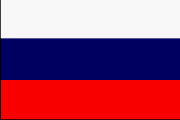





The Government formulates the state budget, submits it to the State Duma, and issues a report on its implementation. In late 1994, the parliament successfully demanded that the Government begin submitting quarterly reports on budget expenditures and adhere to other guidelines on budgetary matters, although the parliament's budgetary powers are limited. If the State Duma rejects a draft budget from the Government, the budget is submitted to a conciliation commission including members from both branches.
The ministries of the Government, which numbered twenty-four in mid-1996, execute credit and monetary policies and defense, foreign policy, and state security functions; ensure the rule of law and respect for human and civil rights; protect property; and take measures against crime. If the Government issues implementing decrees and directives that are at odds with legislation or presidential decrees, the president may rescind them.
Besides the ministries, in 1996 the executive branch included eleven state committees and forty-six state services and agencies, ranging from the State Space Agency (Glavkosmos) to the State Committee for Statistics (Goskomstat). There were also myriad agencies, boards, centers, councils, commissions, and committees.
Politically, economically, and socially, Russia continues to be a state in transition. While constitutional structures are well defined and democratic in conception, democratic institution building continues to face serious challenges, often due to significant limitations on the State's financial resources. The 1993 Constitution establishes a government with three branches and checks and balances, although it provides for a strong executive. The executive branch consists of an elected president and a government headed by a prime minister. There is a bicameral legislature (Federal Assembly), consisting of the State Duma and the Federation Council, and a judicial branch.
In the political system established by the 1993 constitution, the president wields considerable executive power. There is no vice president, and the legislative is far weaker than the executive. The president nominates the highest state officials, including the prime minister, who must be approved by the Duma. The president can pass decrees without consent from the Duma. He also is head of the armed forces and of the national security council.Both the President and the legislature were selected in competitive elections judged to be largely free and fair, with a broad range of political parties and movements contesting offices. President Boris Yeltsin was elected in 1996, and Prime Minister Vladimir Putin took office in August. On 31 December 1999 President Yeltsin resigned and Prime Minister Putin became Acting President, and was elected presidential in March 2000.
Russia is one of the most industrialized of the former Soviet republics. However, much of its industry is antiquated and highly inefficient. Besides its resource-based industries, it has developed large manufacturing capacities, notably in machinery. Russia inherited most of the defense industrial base of the Soviet Union. Efforts have been made with varying success over the past few years to convert defense industries to civilian use. Russia's GDP, estimated at $183 billion at exchange rates current in 1999, increased by 3.2% in 1999 compared to 1998. The major factors behind this strong growth were the earlier devaluation of the ruble (spurring production of Russian products as substitutes for more expensive imports); record high commodity prices on international markets, particularly oil (Russia's principal export); low inflation; and strict government budget discipline. For 1999 the unemployment rate was 12.6% (using International Labor Organization methodology). Combined unemployment and underemployment may exceed that figure. Industrial output in 1999 was up sharply (to 8.1%) compared to 1998, aided by the devalued ruble.